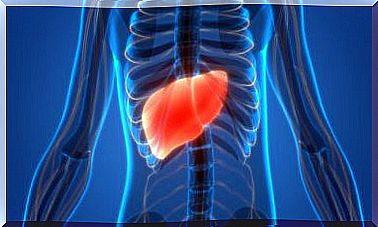What You Didn’t Know About Cardiac Arrhythmias

Cardiac arrhythmias are a disorder that affects many people. For this reason, we’ve talked about this issue several times on our website. However, there are some aspects that you may not yet know about this disease.
As highlighted by the Spanish Heart Foundation, the arrhythmia is a heart rhythm disorder. When the heart beats too fast, too slowly, or has an irregular rhythm, these are signs that alert you to your presence.
Next, we’ll look at some aspects of cardiac arrhythmias that you need to keep in mind. This is important as this disease affects more than 50% of the population.
Knowing cardiac arrhythmias
Electrophysiology: An Effective Test

Electrophysiology is a test performed to diagnose those who suffer from arrhythmias
This test has been of great importance, as it allows treatment to be adjusted to avoid wasting time testing options that will not improve the patient’s problem. It is certainly a technique that is having great success and results.
The risk of sudden death from cardiac arrhythmias is high
Sudden death is a problem whose cause is, in some cases, cardiac arrhythmia. Specifically, arrhythmias of ventricular fibrillation and ventricular tachycardia.
These types of arrhythmias are often called “malignant” because of the high risk of sudden cardiac arrest. If this happens, treatment should be carried out as soon as possible with a ventricular defibrillation.
Not all arrhythmias are equally dangerous.

Although in some types of cardiac arrhythmias there is the risk of sudden death mentioned above, this does not mean that they are all equally dangerous. That’s why electrophysiology is so important. With this exam, it is possible to know the severity of the arrhythmia suffered by the patient.
- Extrasystole : also known as “premature ventricular contraction”, it consists of a beat out of time, before the patient’s heart rate. It’s usually not something serious, although you need to follow up. It is usually treated with a change in diet and lifestyle.
- Sinus bradycardia : heart rate slows, is irregular, and can sometimes stop. In some cases, it may not require any treatment. However, if it gets worse, it is possible to resort to a pacemaker.
- Ventricular fibrillation : this is a type of heart disease, which we have already mentioned, that can be life-threatening, causing sudden cardiac arrest that can lead to death.
There are many other types of arrhythmias, such as heart block and paroxysmal supraventricular tachycardia. The important thing is to understand that not all are equally serious.
The treatments are diverse
As not all cardiac arrhythmias are equally serious, so are treatments. As we have already seen, in some cases treatment only involves adequate monitoring and control. In others, it may be necessary to give up harmful habits such as smoking and alcohol and improve the diet.
However, it is true that arrhythmias often need to be treated with medication, although they are not all the same. It all depends on the patient, the type of arrhythmia he has and its severity.
There is also a treatment known as “radiofrequency ablation” which is usually performed after the electrophysiological study. He is able to eradicate the arrhythmia through a small burn that destroys the heart tissue that is causing it. Currently, this treatment is having excellent results.
Did you know all these facts about cardiac arrhythmias? Although we have discussed this issue on different occasions, there is always some data that can be exploited to learn even more.
Also, keep in mind that many studies continue to investigate new ways to deal with this type of illness. So while we’ve mentioned several treatments, there may be some new ones that we’ll no doubt share with you in the future.









